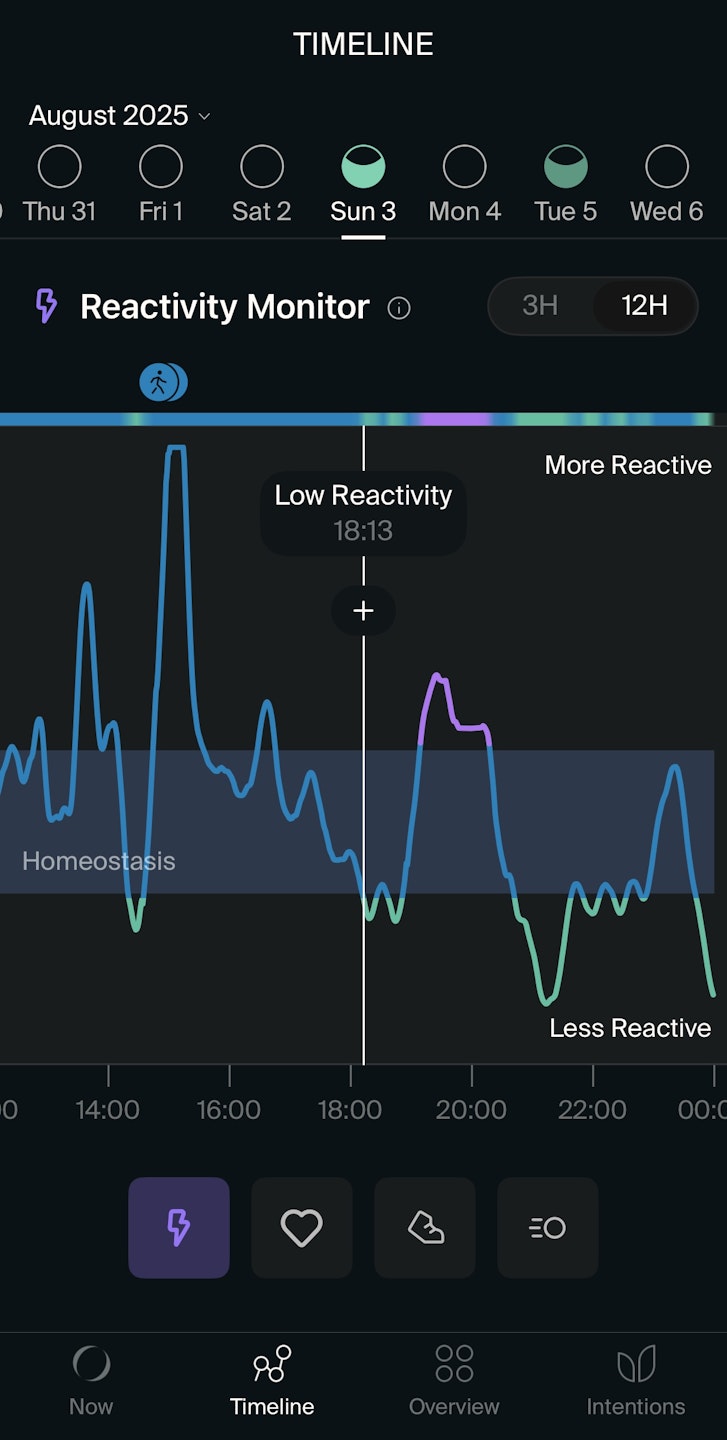
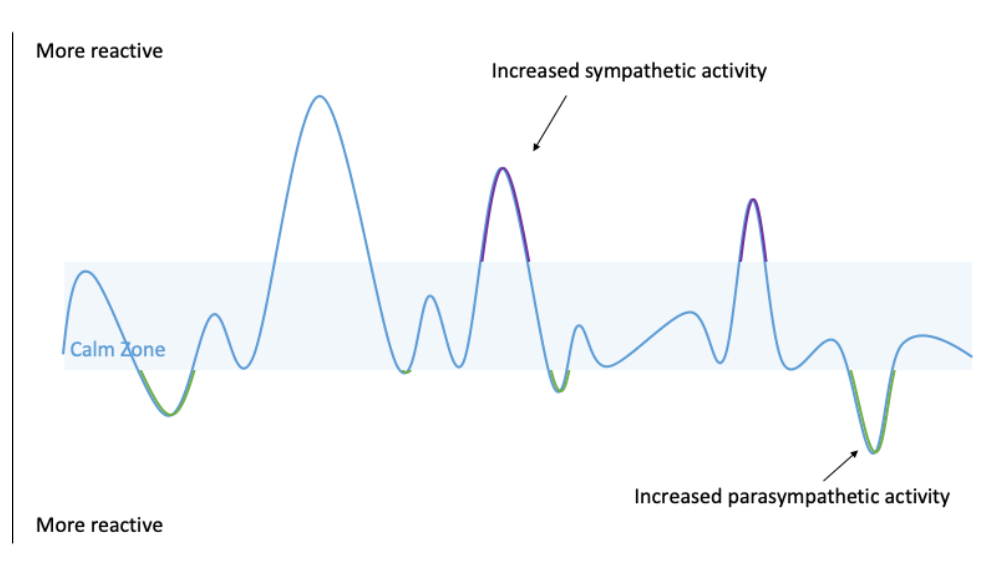
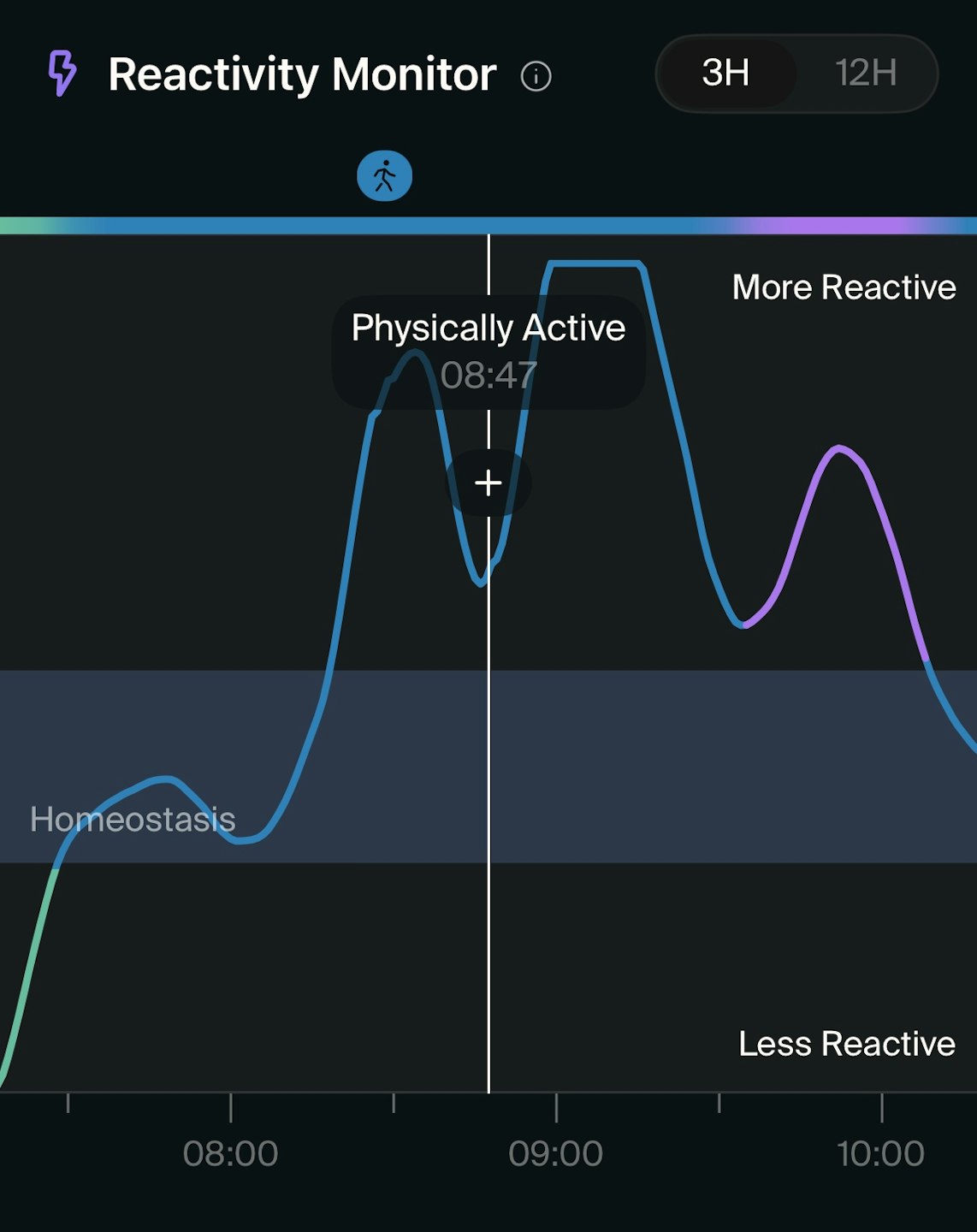
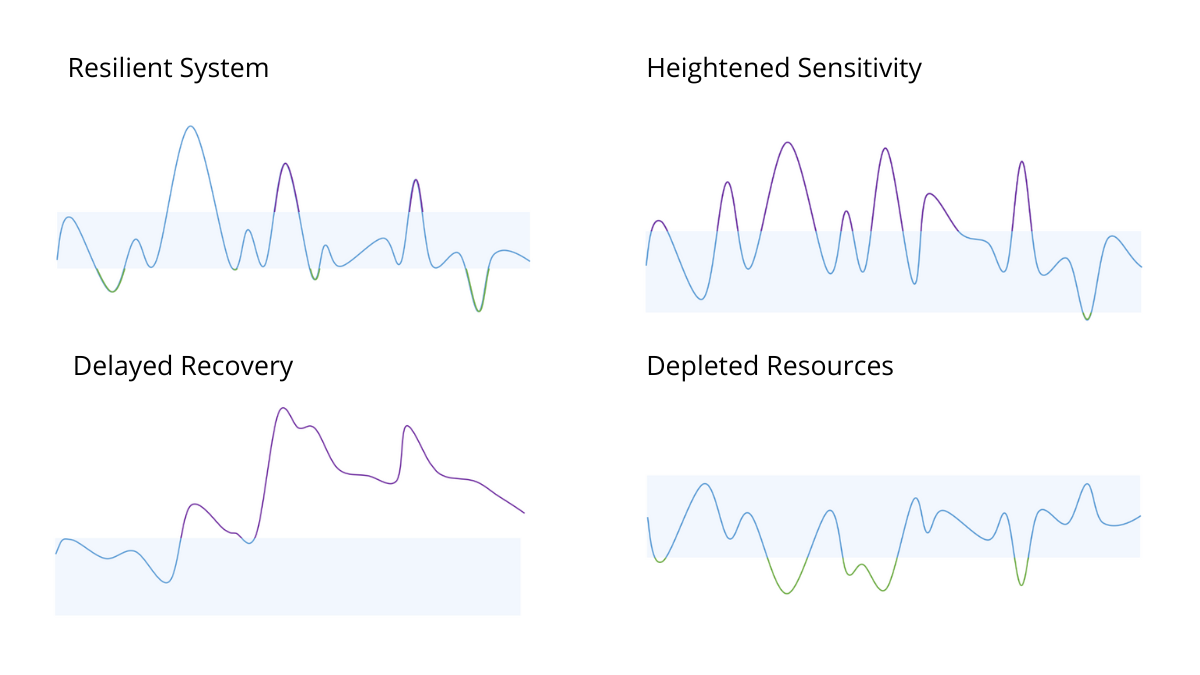
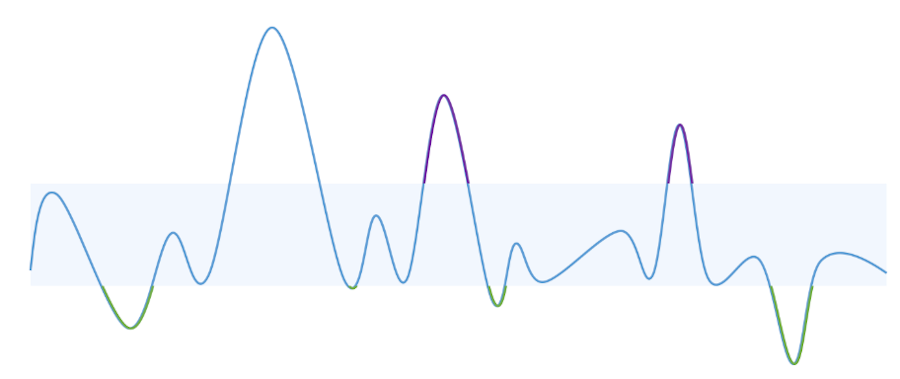

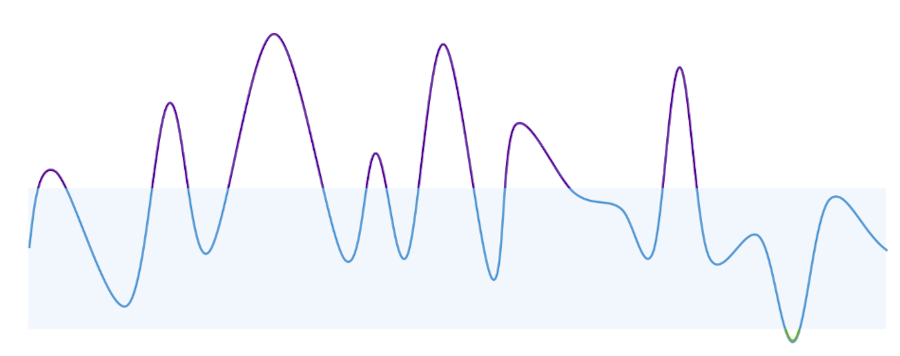


What is the Reactivity Monitor
The Reactivity Monitor tracks how your body responds to both physical activity and stress —whether mental (psychological, such as pre-presentation anxiety) or physical (physiological, such as an illness).
By showing when and where stress occurs, it enables you to spot patterns, identify triggers, and notice days when you’re more or less sensitive to stress.
It also gives insight into how well your body recovers from stress afterward.
Currently, the Reactivity Monitor is based on a robust analysis of your heart rate and movement patterns. We intentionally exclude daily Heart Rate Variability (HRV) from its calibration, as it is not suitable for continuous monitoring in daily life. Our commitment is to provide only precise and reliable health metrics.

Key terms
Homeostasis: Your body’s natural state of equilibrium, a balanced and restorative zone, when you’re engaged in regular activities, like working, chatting, or reading, without noticeable physical changes.
Reactive: Any physical response to specific situations, whether from internal (like emotions) or external factors (like exercise). The Stress Gauge monitors and differentiates these reactions, including changes in heart rate, sweating, or other signs of stress.
Sympathetic Nervous System (fight-or-flight): Increases reactivity, preparing you to meet threats that require immediate action. Your heart beats faster, breathing quickens, palms may get sweaty, and decision-making becomes more impulsive.
Parasympathetic Nervous System (rest-and-digest): Decreases reactivity to focus on background processes such as cell renewal, recovery, and digestion. Your heart rate slows, breathing deepens, digestive activity increases, and the body shifts resources toward maintenance and restoring.

How to read the Reactivity Monitor
The Reactivity Monitor chart shows a line that reflects your reactivity. It also uses colours to indicate different types of mental states:
Purple: Higher reactivity- often linked to emotional responses like stress or excitement.
Blue: You might be in Homeostasis, or you could be physically active—like during exercise or movement. Another possible state is physically recovering, which typically happens in the minutes following a physical activity. Even if you're no longer in Homeostasis due to activity, the colour may stay blue, as this doesn't mean you're stressed, just physically engaged.
Green: Low reactivity—typically seen during restful states like sleep.
When the Reactivity Monitor shows reactivity above the Homeostasis, it means your body is actively responding to a situation—whether it's a stress response (purple) or physical activity (blue). Recognizing these moments can help you identify your triggers and manage them more effectively.
On the other hand, spending long periods below Homeostasis may signal fatigue or low energy, suggesting you might be more vulnerable to getting sick or still in recovery.
Keep reading to learn more about stress resilience and four common patterns you might notice in your Reactivity Monitor readings, and what they can tell you about your body.

Understanding your Stress Resilience
Your Reactivity Monitor helps you understand how well your body is managing daily demands and recovering from stress. When you spend more time in Homeostasis, it’s a sign of good balance and resilience.
Naturally, you will sometimes move outside this zone, during exercise, challenges, or exciting moments, but returning smoothly to balance shows that your body is handling stress well.
At times, your body may react more strongly to small triggers or take longer to recover. Recognizing these patterns can help you better support your well-being through rest, recovery, or mindful breaks.
Here are the different patterns you may see in your Reactivity Monitor:
1. Resilient System
2. Delayed Recovery
3. Heightened Sensitivity
4. Depleted Resources
We’ll take a closer look at each below.

Resilient System
When you're Reactivity Monitor often shows in the Homeostasis, it’s a sign that your body is healthy and thriving. You move through daily life with ease and focus. You might occasionally leave this zone, like during a workout or challenging situations, but you naturally bounce back to a balance soon after.
High Resilience:
When your Reactivity Monitor shows High Resilience, it means your body might be handling daily demands well. You spend most of your time in Homeostasis and naturally recover from brief moments of stress, helping you stay balanced, focused, and at ease through the day.
Low Resilience:
When your Reactivity Monitor shows Low Resilience, it means your body might be under more pressure than usual. You’re spending more time outside Homeostasis and recovering more slowly. Pausing for small moments of rest, like a short walk or deep breaths, can help you reset and build resilience over time.

Delayed Recovery
If you notice your Reactivity Monitor stays high for a while after stress, you’re likely spending extended time in the “fight-or-flight” mode. This means it’s taking longer than usual to recover. Over time, this can wear you down and use up your energy reserves.
High load (Delayed Recovery):
When your Reactivity Monitor shows High Load (Delayed Recovery), it means your body may be working harder and taking longer to reset, with slower recovery between stress responses.
Recovery can take so long that it puts extra pressure on your body, often when you experience 3 or more hours of stress responses in a day. Gentle pauses, like five mindful minutes, can help you recharge and return to a balanced state more easily.

Heightened Sensitivity
If your Reactivity Monitor is often spiking, even with small triggers, your system may be extra sensitive right now. That means your body is reacting to everyday stimuli, sometimes unnecessarily, which can lead to feeling drained, even when situations may not be as stressful as you see them.
High Load (Heightened Sensitivity):
When your Reactivity Monitor shows High Load (Heightened Sensitivity), it means your body might have been on high alert, responding to difficult or exciting challenges. It could also be a sign of increased sensitivity to everyday demands. Recovery can take so long that it puts extra pressure on your body, often when you experience 3 or more hours of stress responses in a day.
A little stress can help you stay sharp, but staying in this state too long, feeling more irritable than usual, and maybe even snapping at people, can be draining. Small pauses, like a short walk or deep breaths, can help you return to balance.
Delayed Recovery & Heightened Sensitivity:
When your Reactivity Monitor shows Delayed Recovery & Heightened Sensitivity, you might notice yourself being more easily triggered and taking longer to return to balance. Even small stressors might feel stronger today. Gentle breaks can help you reset and support your resilience.

Depleted Resources
When your Reactivity Monitor stays below Homeostasis most of the day, it may mean your body’s low on resources. This can happen when you're exhausted, getting sick, or still recovering.
You might also feel unmotivated or less interested in things you normally enjoy. That’s your body prioritizing rest and recovery over everything else.
